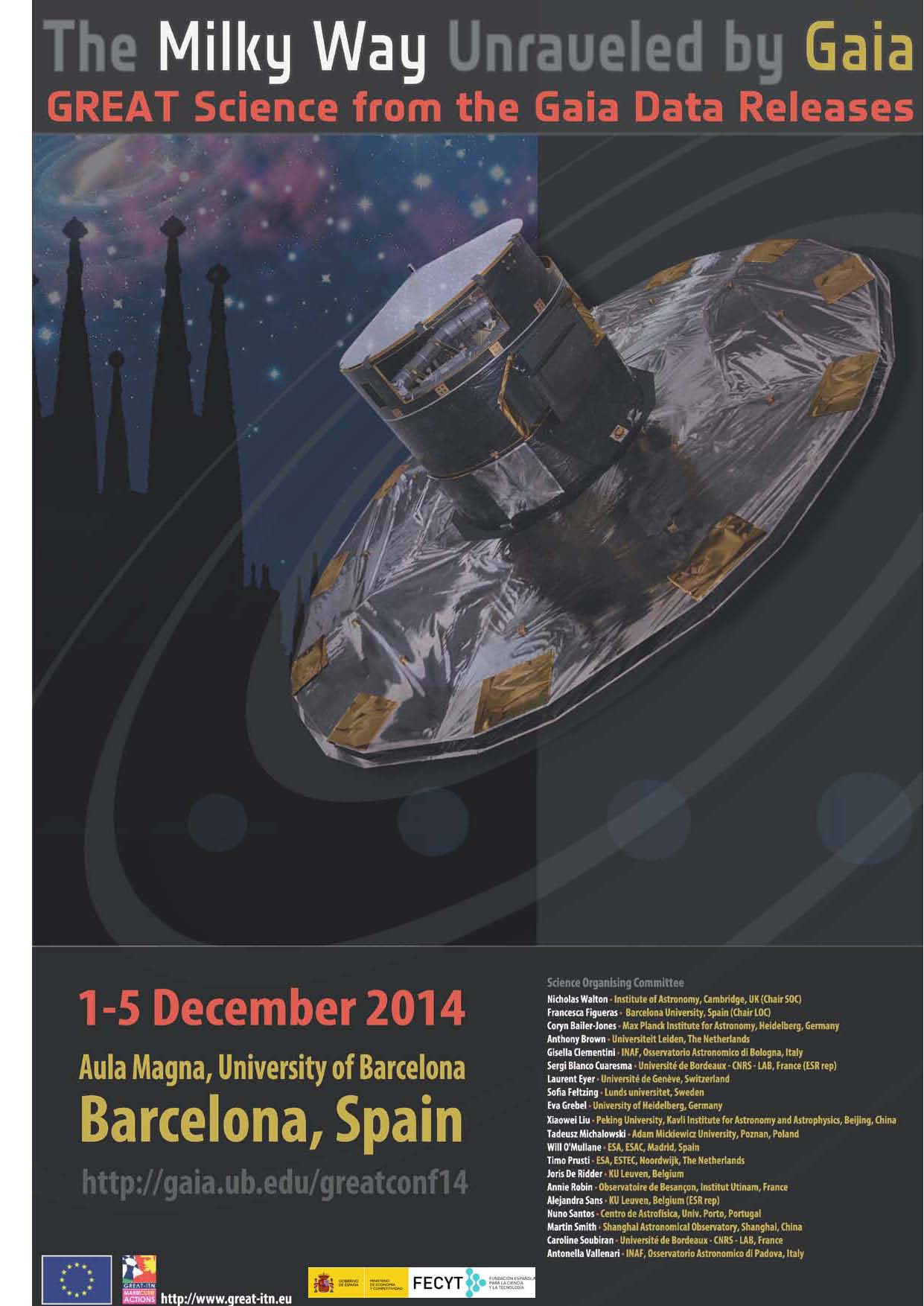The IMF at intermediate masses from Galactic Cepheids
Mor R.; Robin A.; Lemasle B.; Figueras F. (ICC-UB / IEEC, Spain)
Aims. To constrain the Initial Mass Function (IMF) of the Galactic young (< 1Gyr ) thin Disc population using Cepheids. Methods. We have optimized the flexibility of the new Besanc¸on Galaxy Model (Czekaj et al., 2014) to simulate magnitude and distance complete samples of young intermediate mass stars assuming different IMFs and Star Formation Histories (SFH). Comparing the simulated synthetic catalogues with the observational data we studied which IMF reproduces better the observational number of Cepheids in the Galactic thin Disc. We analysed three different IMF: (1) Salpeter, (2) Kroupa-Haywood and (3) Haywood-Robin IMFs with a decreasing SFH from Aumer and Binney, 2009. Results. For the first time the Besanc¸on Galaxy Model is used to characterize the galactic Cepheids. We found that for most of the cases the Salpeter IMF overestimates the number of observed Cepheids and Haywood-Robin IMF underestimates it. The Kroupa-Haywood IMF, with a slope = 3.2, is the one that best reproduces the observed Cepheids. From the comparison of the predicted and observed number of Cepheids up to V=12, we point that the model might underestimate the scale height of the young population. Conclusions. In agreement with Kroupa and Weidner (2003) our study shows that the Salpeter IMF ( = 2.35) overestimates the star counts in the range 4 ≤ M/M⊙ ≤ 10 and supports the idea that the slope of the intermediate and massive stars IMF is steeper than the Salpeter IMF.Topic revision: r1 - 2014-11-28 - SusanaBascon
Ideas, requests, problems regarding TWiki? Send feedback

